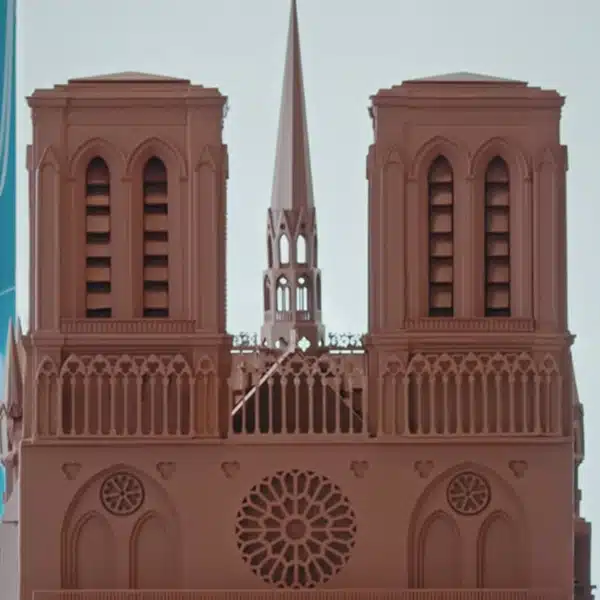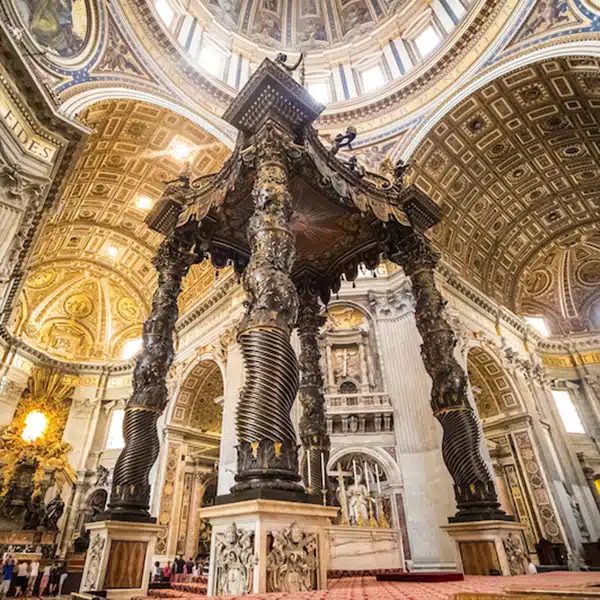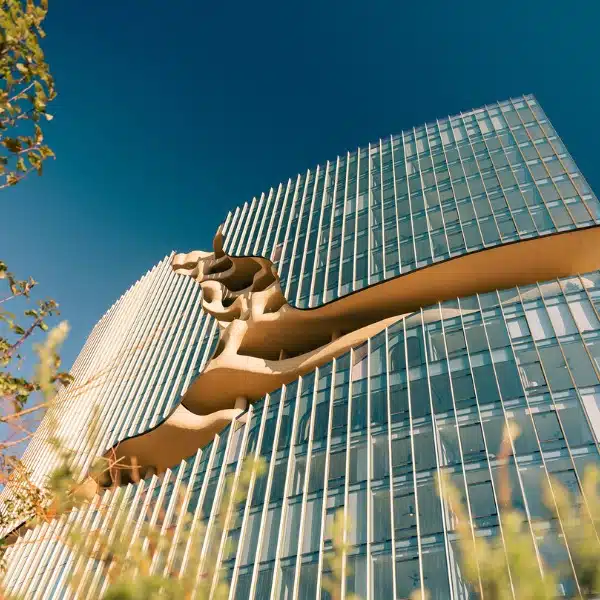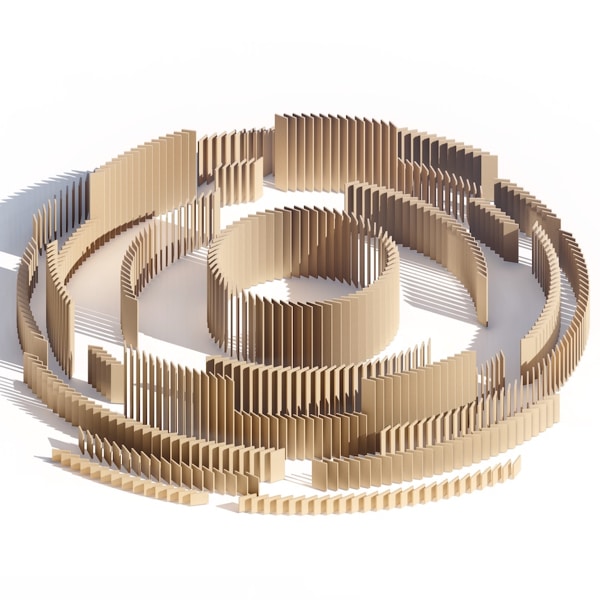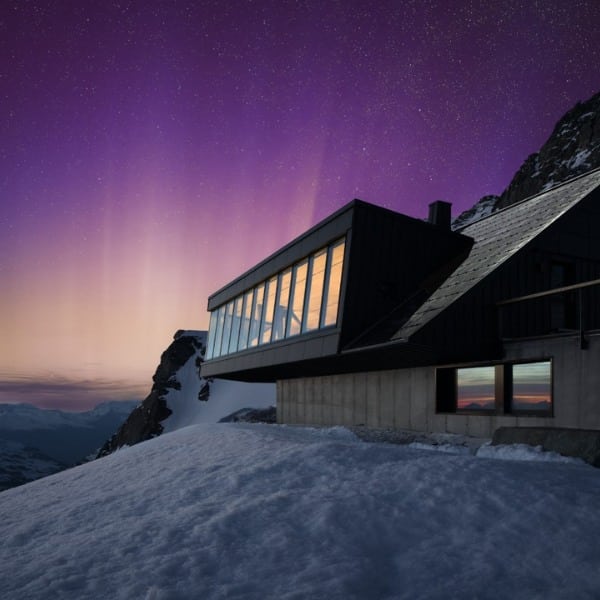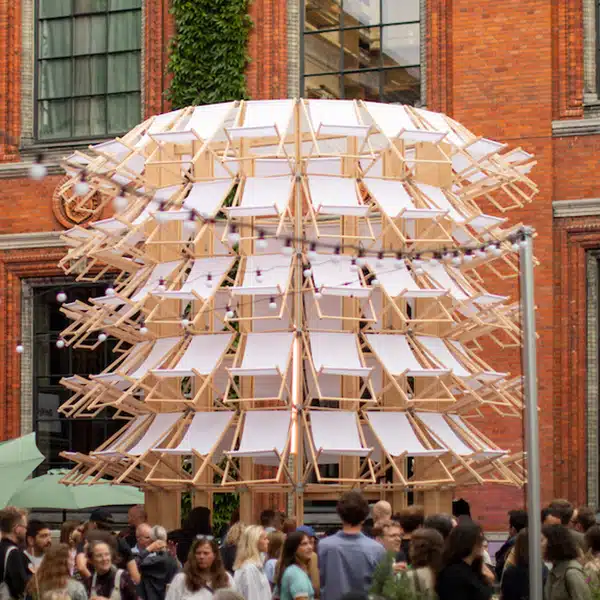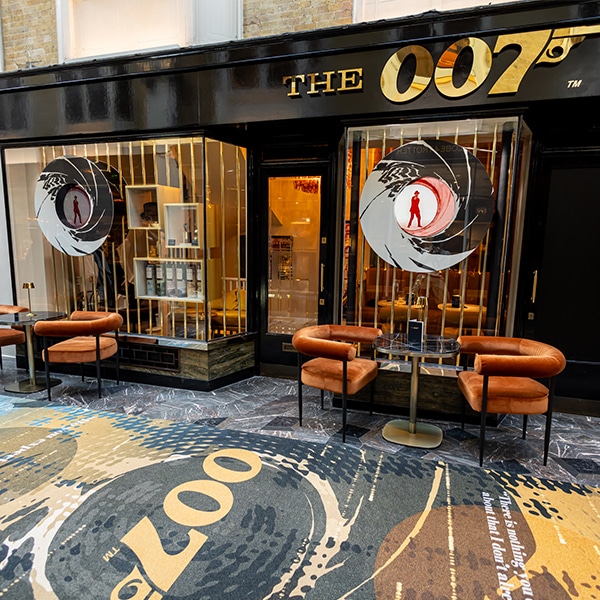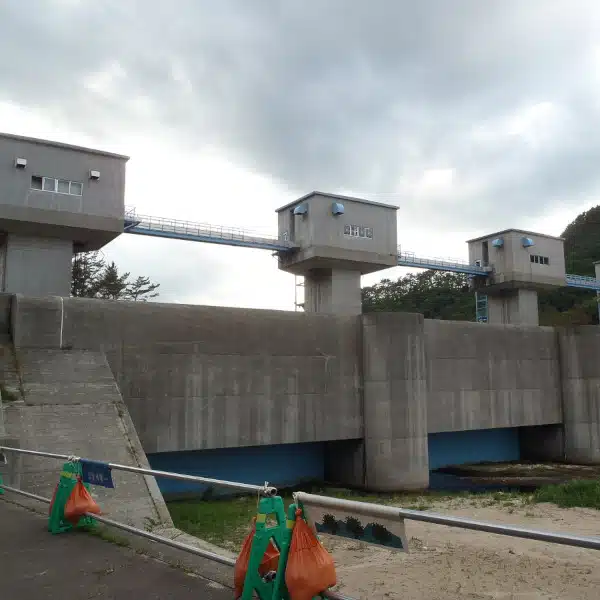
From left to right: Havenhuis Antwerpen, Beijing Daxing Airport, 520 West 28th Street, One Thousand Museum, 520 West 28th Street, Heydar Aliyev Center, Vitra Fire Station, Galaxy SOHO
Dame Zaha Hadid was one of the most revolutionary and well-known architects of the 21st century. Her unexpected death at the age of 65 shook the world of architecture and cut short her incredible career. Her legacy continues today and her firm, Zaha Hadid Architects, remains one of the top architecture firms in the world. Some of her major accomplishments include designing the largest single-building airport terminal in the world and winning the legendary Pritzker Prize.
Hadid’s style is often understood to be deconstructivism—a postmodernist style of architecture that breaks down and manipulates forms to create unexpected works. Each project designed by Hadid feels like a new study, but all seem related in terms of fragmentation, incredible curves, and structure that feels so futuristic it hardly seems real for our era. As the result of an article written by The Guardian, she is now endearingly called “the Queen of the Curve.” In response to questions on her unusual design style, Hadid said, “There are 360 degrees, so why stick to one?”
View this post on Instagram
In order to fully appreciate her architecture, it's important to know the woman behind it all.
A Brief Biography of Zaha Hadid
Hadid was born in Baghdad, Iraq and received an international education before receiving her training from the Architectural Association in London. She was also mentored by another world-renowned architect, Rem Koolhaas of OMA, and others. Many close to her saw that Hadid had incredibly high expectations for herself and all those around her. “Architecture is like writing,” says Hadid. “You have to edit it over and over so it looks effortless.” Looking at her impossibly complicated curving and twisting projects, it is clear to see that her precision paid off.
Later in her career, Hadid became interested in expanding her incredible monumental buildings to become pieces of infrastructure. “I started out trying to create buildings that would sparkle like isolated jewels,” she once explained, “now I want them to connect, to form a new kind of landscape, to flow together with contemporary cities and the lives of their peoples.” As you scroll through the following projects, you may be able to follow her progression and the increasing scale of commissions.
Read on to see some of our favorite projects by Zaha Hadid. How many iconic projects do you recognize? You may just find your new favorite Hadid design.
Iconic Architecture by Zaha Hadid
Vitra Fire Station (1993)
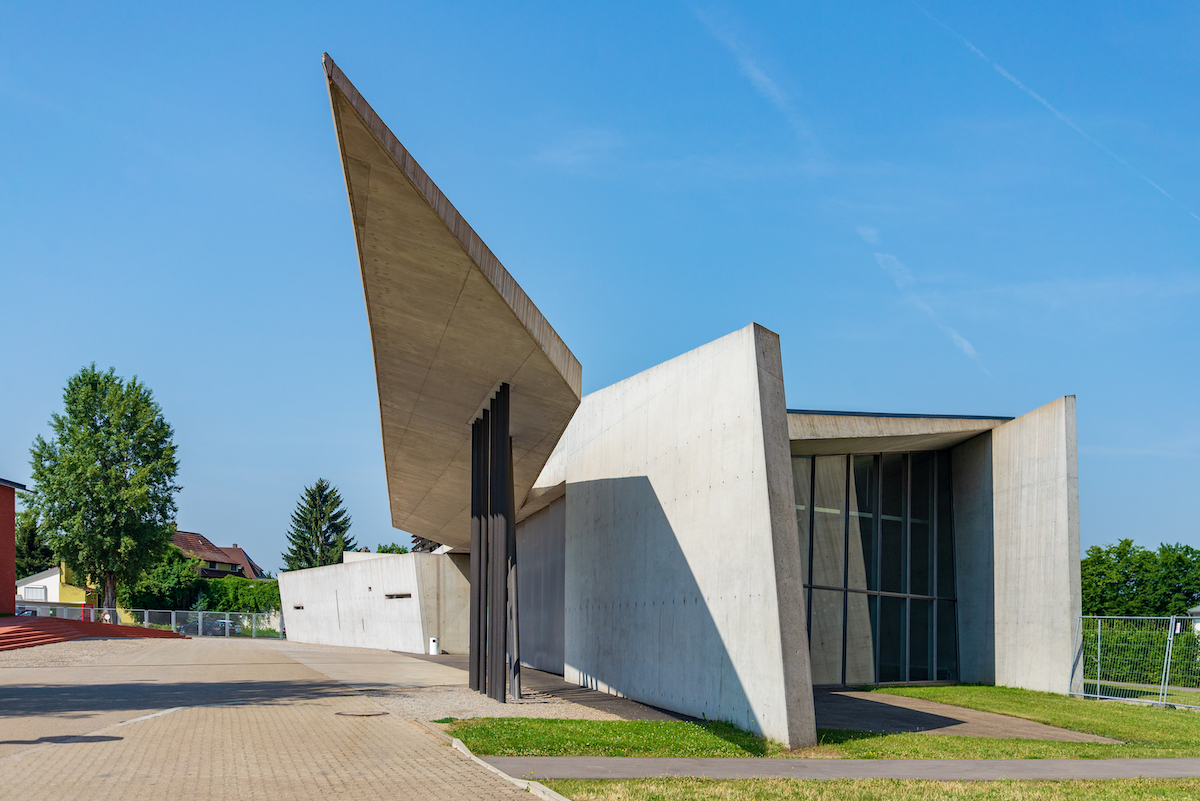
Vitra Fire Station in Weil am Rhein, Germany (Photo: Stock Photos from Peeradontax/Shutterstock)
Vitra Fire Station was one of Hadid's first architectural projects to be fully realized and features the same dynamic and radical gestures that can be seen throughout her career. The commission came about after a fire that destroyed structures on the Vitra Campus. Hadid was chosen to design and execute a building that would help provide immediate relief for future disasters.
Weil-am-Rhein later opened their own fire station and the Vitra Fire Station is now used for exhibitions. Despite its short usage for the function it was designed for, this commission put Hadid's designs on the same campus as other famous architects, including Frank Gehry. Vitra Fire Station proved that while Hadid's designs were unorthodox, they were certainly possible.
Phæno Science Center (2005)
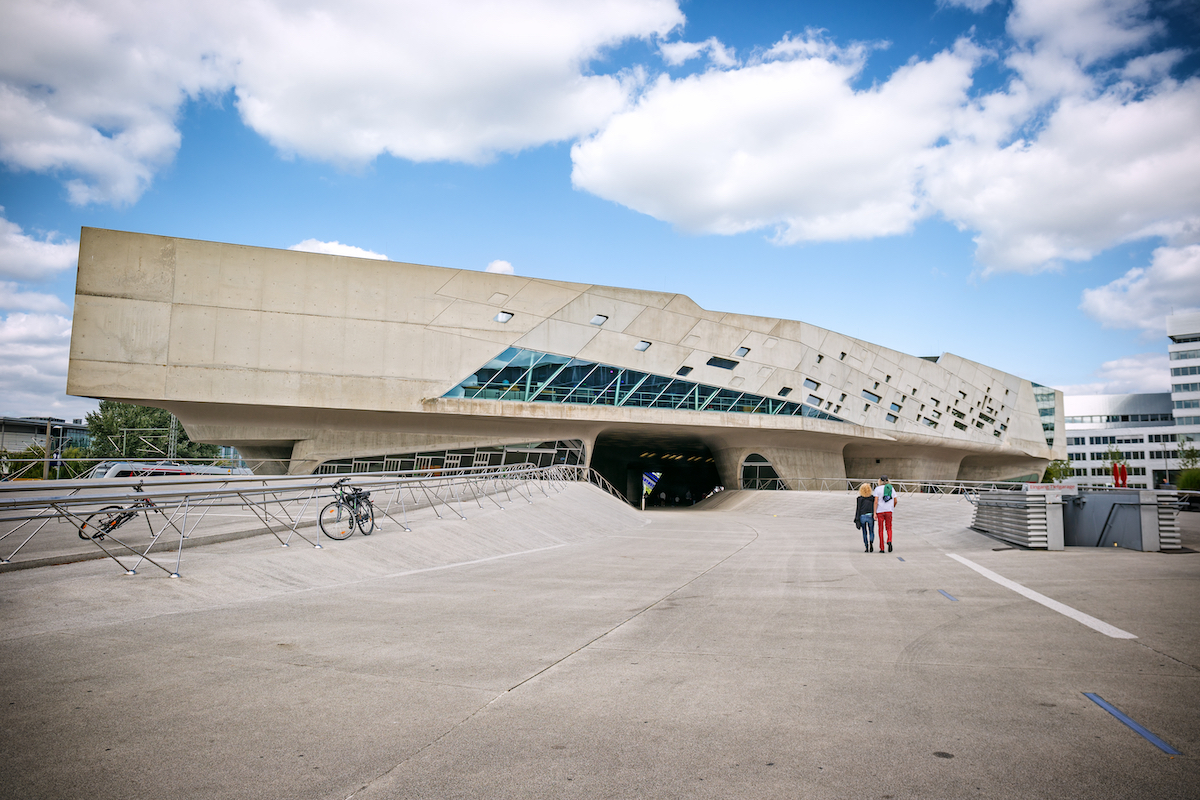
Phæno Science Center in Wolfsburg, Germany (Photo: Stock Photos from Pani Garmyder/Shutterstock)
The Phæno Science Center commission came as a result of an international design competition in 2000. Hadid’s futuristic building stood out as a modern but elegant solution that met the demands of a center dedicated to science. It is now considered an iconic presence in Wolfsburg, Germany.
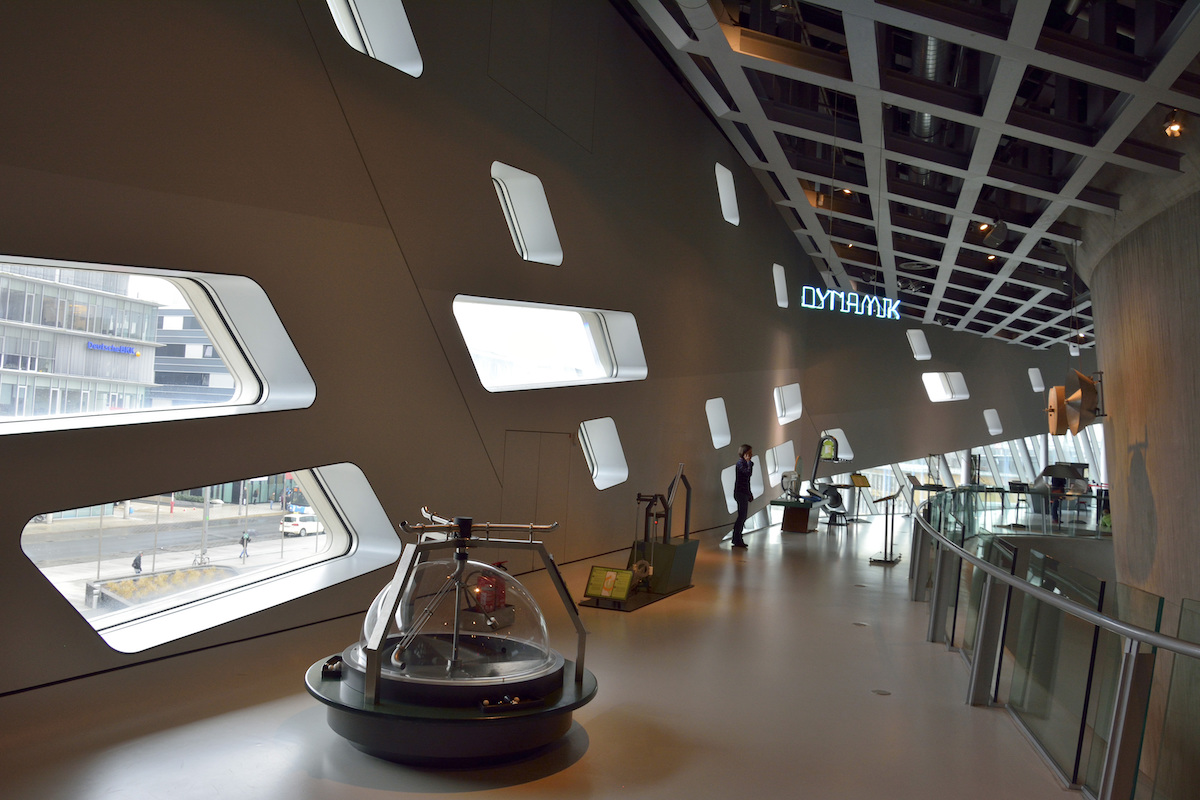
Phæno Science Center in Wolfsburg, Germany (Photo: Stock Photos from Alizada Studios/Shutterstock)
The massive structure seems to float off the ground, creating an outdoor public plaza that activates the site and draws viewers towards the museum. Like much of Hadid’s work, massive concrete panels fluidly “bend” to wrap around each curve, interrupted only by the scattered windows cut out of the heavy concrete mass. If you think this building is cool from a distance, just wait until you get a closer look. Looking through the oversized parallelogram-shaped windows may convince you that you have entered a space ship.
Guangzhou Opera House (2010)
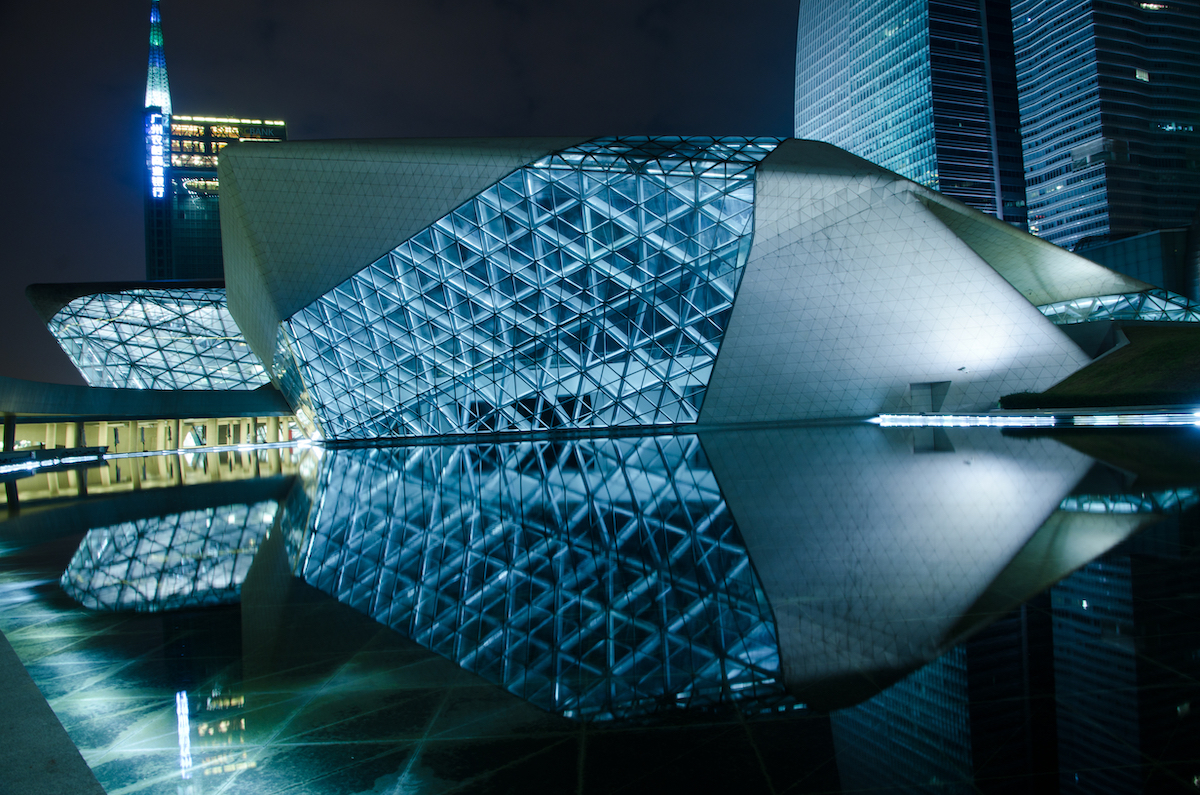
Guangzhou Opera House in Guangzhou, China (Photo: Stock Photos from Pan Xunbin/Shutterstock)
The Guangzhou Opera House is a perfect example of architecture that truly celebrates the structure. Located at the center of Guangzhou’s cultural district, this building makes for stunning photographs as it reflects off the Pearl River. Two unique boulder-shaped masses welcome visitors into a new cultural center with their leaning glass façades.
Zaha Hadid Architects explains that the form was inspired by “pebbles in a stream smoothed by erosion” to create the profiles of the Guangzhou Opera Houses. The smoothed pebbles alternate between large solid areas and transparent areas which show the massive structure used to support each fold or bend. Aside from the impressive structure and the building’s beauty as a single object, Hadid met one more challenge. The Guangzhou Opera House helped to establish the surrounding area’s identity as an important cultural district in Guangzhou.
Sheikh Zayed Bridge (2010)
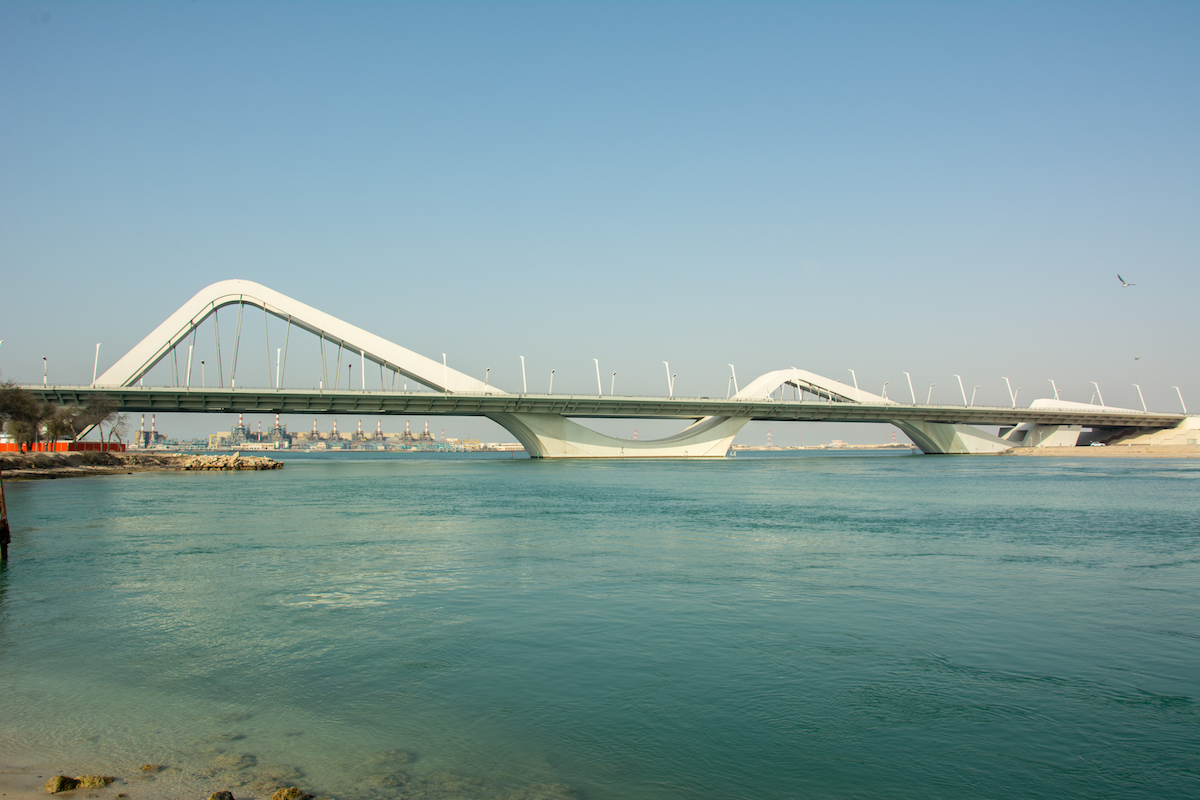
Sheikh Zayed Bridge on the Maqta Canal, Abu (Photo: Stock Photos from Nina Alizada/Shutterstock)
The Sheikh Zayed Bridge is a bit different from the other structures on this list. Though it is not technically a building, you may still be able to recognize that this design came from the “Queen of the Curve.” The highway is supported by fluid arches that subtly stretch to form a sinusoidal waveform across the entire structure. The unique bridge connects Abu Dhabi Island to the Gulf south shore and adds four lanes of traffic each way.
Galaxy SOHO (2012)
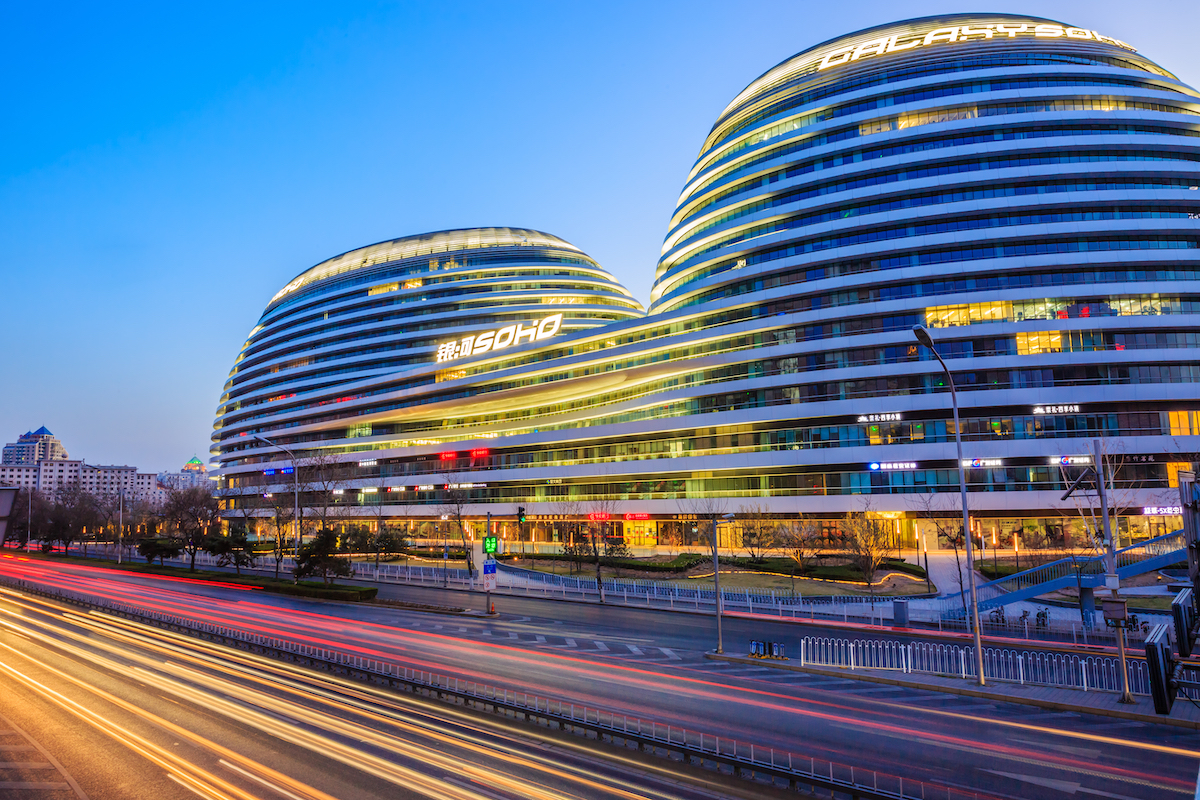
Galaxy SOHO in Beijing, China (Photo: Stock Photos from Zhao jiankang/Shutterstock)
Galaxy SOHO is a complex of four domed buildings connected by effortlessly connecting bridges that create pockets of public space. It is closely related to another Beijing building designed by Hadid called Wangjing Soho. Galaxy SOHO’s central organization around an open space is inspired by traditional Chinese courtyards. This relationship makes the building a great example of architecture borrowing important functional or organizational ideas while creating its own identity or design language. Though Galaxy SOHO preserves the centralized organization, nothing else about this complex feels traditional.
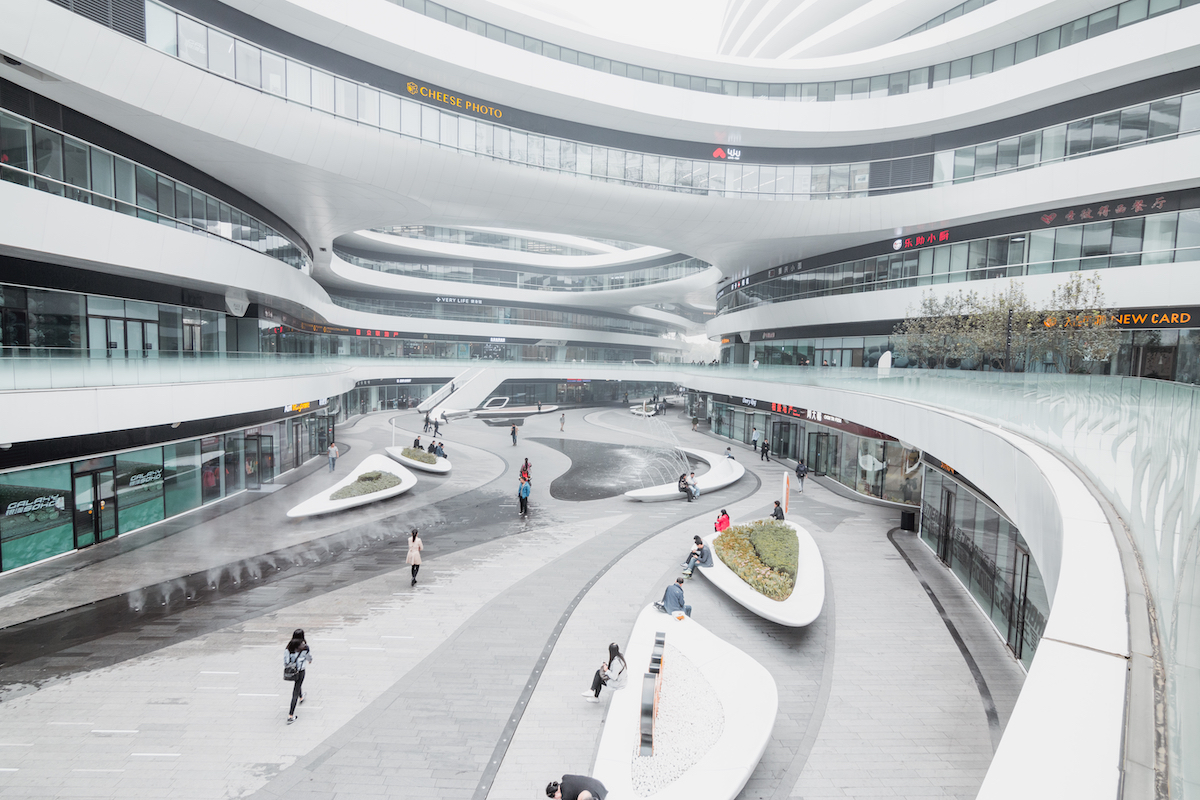
Galaxy SOHO in Beijing, China (Photo: Stock Photos from GuoZhongHua/Shutterstock)
Though Hadid’s originality is the reason she gained her star architect status, not everyone believes her style is appropriate everywhere. The Beijing Cultural Heritage Protection Center stated that the development did not fit in with the style, landscape, or color scheme of the surrounding Beijing area. Still, Hadid did address the requirements of the city in her own way. The intersections created through the unusual bridges and connections and the overall design sought to “respond to the varied contextual relationships and dynamic conditions of Beijing.” Whether or not you believe this complex was appropriate, it is hard not to be impressed when looking up from the incredible central courtyard of Galaxy SOHO.
Heydar Aliyev Center (2012)
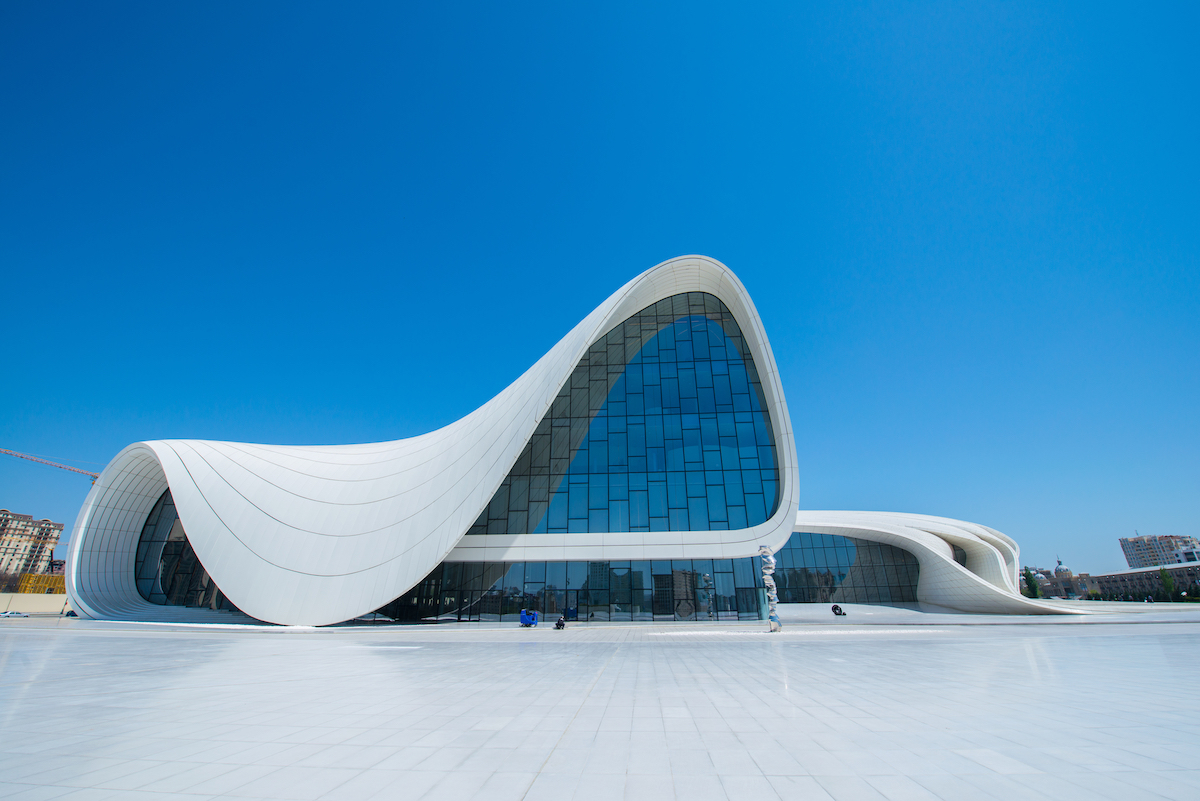
Heydar Aliyev Center in Baku, Azerbaijan (Photo: Stock Photos from Elnur/Shutterstock)
The Heydar Aliyev Center is arguably the most universally recognized building designed by Hadid—even if it's not known by its official name. The incredible simplicity and beautiful connection between building and landscape make this building one of Hadid’s greatest works. Aside from its instantly recognizable form and beautifully constructed gestured, the Heydar Aliyev Center’s design also holds significance due to its site.
According to ZHA, the architecture of Baku, Azerbaijan held architectural and urban ideologies from when it was part of the Soviet Union. Azerbaijan made a cultural push to invest in architecture and infrastructure that would help them modernize after gaining independence in 1991. The design competition of 2007 for the Heydar Aliyev Center, therefore, included a tall order: create a building that will house the nation’s culture, separate the nation from its Soviet past, and convey a promise for a brighter future.
Havenhuis Antwerpen (2016)
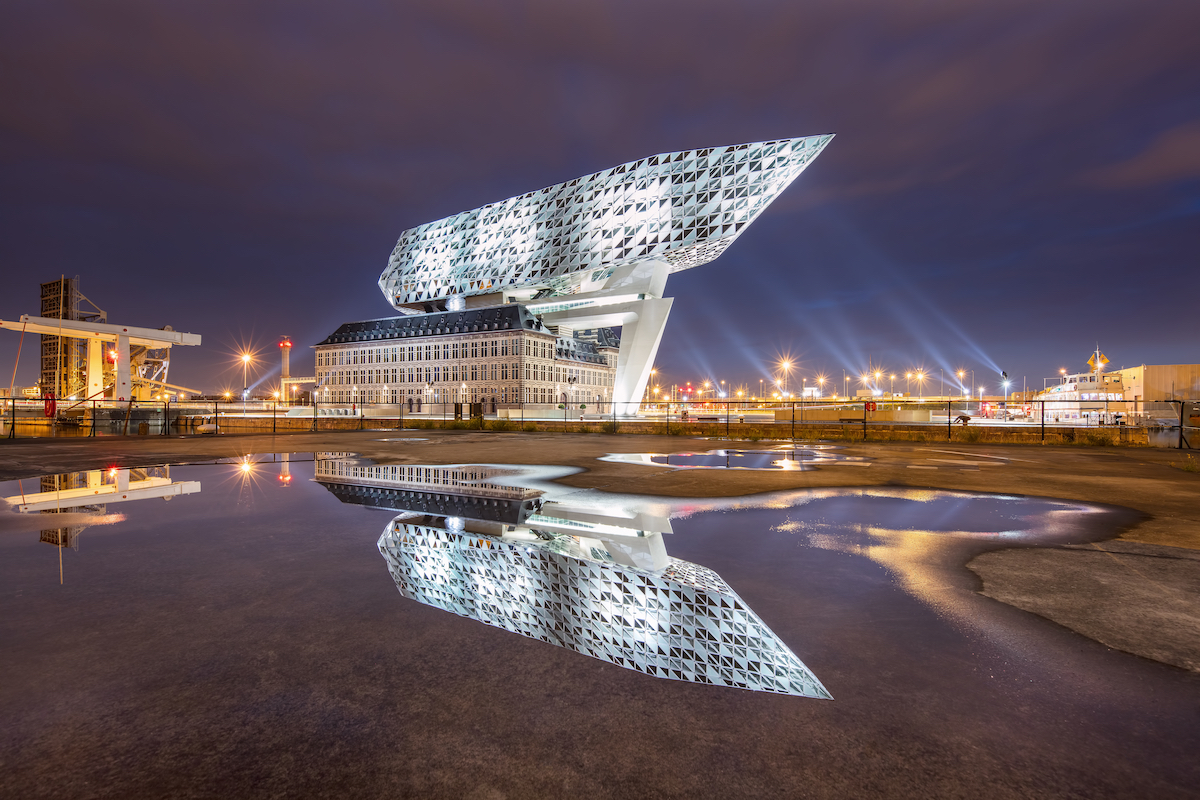
Havenhuis Antwerpen in Antwerp, Belgium (Photo: Stock Photos from TonyV3112/Shutterstock)
Havenhuis Antwerpen, or Antwerp Port House, is a government building commissioned to act as the new headquarters of the Antwerp Port Authority. The competition for this building gave the strict requirement that the firehouse must be preserved. Hadid’s proposal for this adaptive reuse project included a secondary glass-covered building that would sit just above the fire station and would be supported by a single column.
The building itself was an abstraction of a sailing ship in reference to the surrounding waterfront. Diamond-shaped panels cover each façade of the ship and alternate between the glass and opaque materials. In this way, no real windows are designed, but instead, a larger framework defines where light enters the building and where it does not. The diamond shapes themselves are also inspired by site location as they are a reference to Antwerp’s relationship with diamonds. So while the futuristic glass spaceship in the sky might not look to care much about the surrounding context, it is clear that Hadid did her homework on the city’s history.
520 West 28th Street (2017)
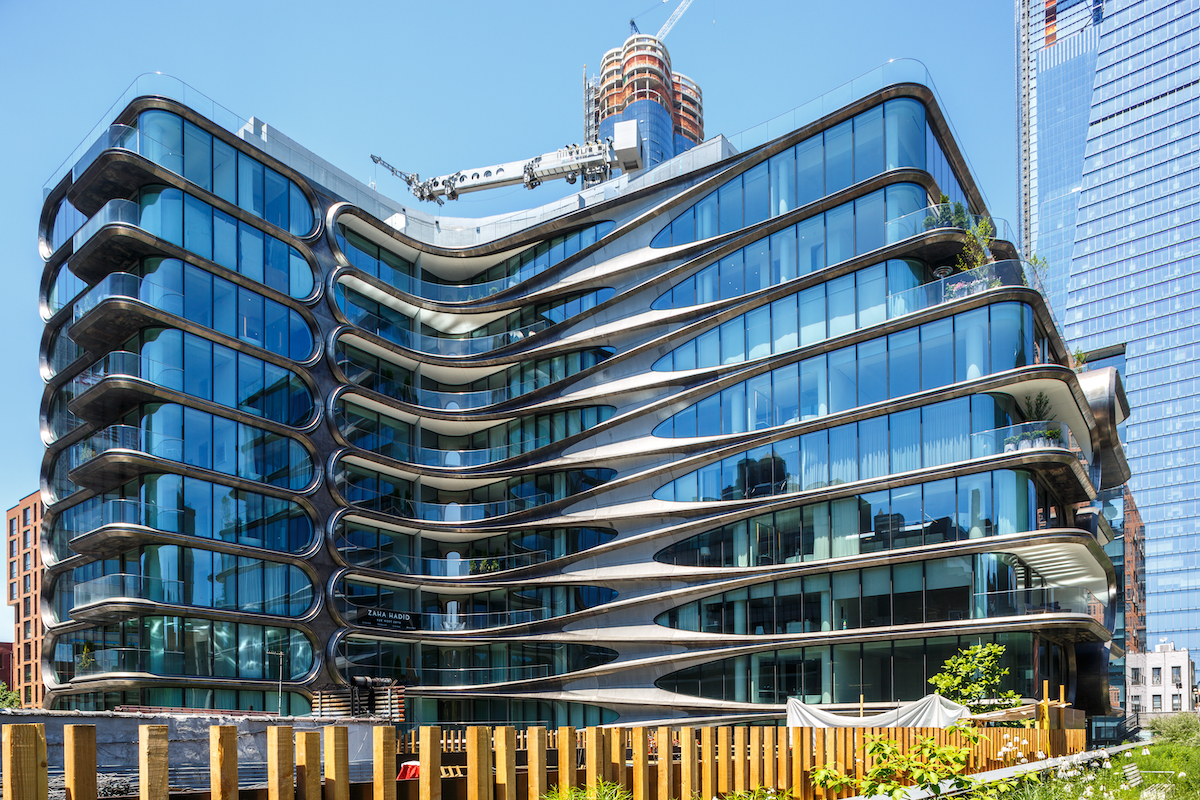
520 West 28th in New York City, New York, U.S. (Photo: Stock Photos from solepsizm/Shutterstock)
If you have ever walked along New York City’s Highline—an abandoned railroad turned elevated park—you know to expect incredible architecture with a very high price tag. One of these luxury buildings was designed by Hadid and features the futuristic geometries common to her work. 520 West 28th Street includes four art galleries on the ground floor, luxury apartments, and a duplex penthouse recessed from the edge of the building. The L-shape means passersby on the High Line get a great view of Hadid’s first and only New York City residential building.
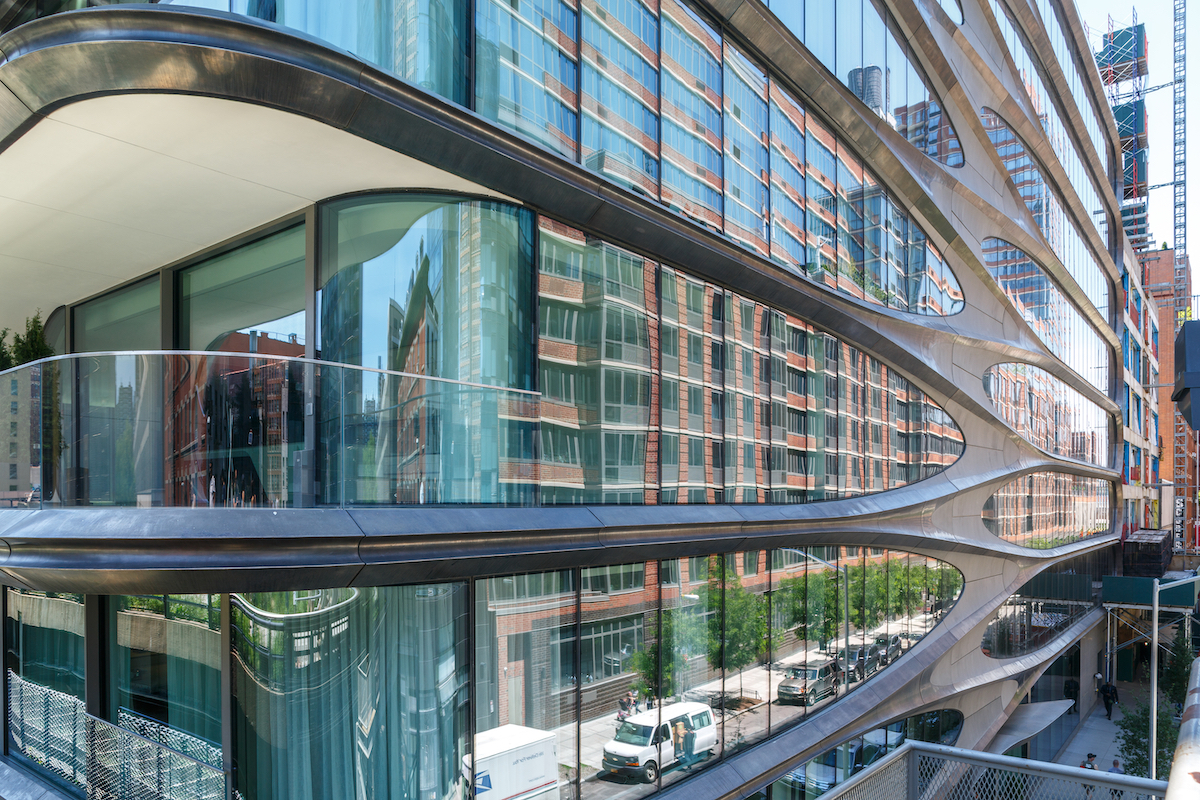
520 West 28th in New York City, New York, U.S. (Photo: Stock Photos from solepsizm/Shutterstock)
Beijing Daxing International Airport (2019)
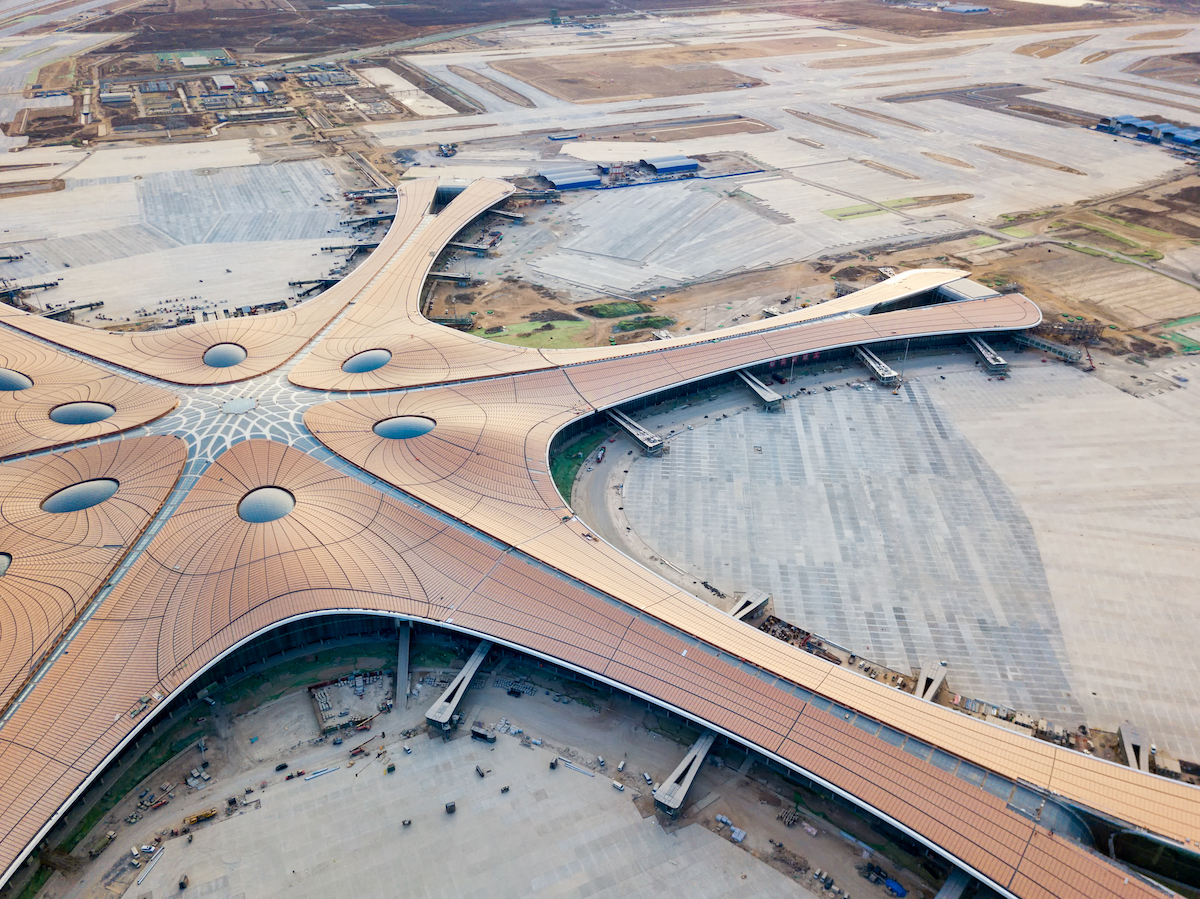
Beijing Daxing International Airport in Beijing and Langfang, Heibei Province, Beijing, China (Photo: Stock Photos from lazy dragon/Shutterstock)
Beijing Daxing International Airport, sometimes nicknamed the starfish, is Beijing's second international airport and the largest single-building airport terminal in the world. The airport is also one of the last projects Hadid worked on before her death in 2016. Though the buildings on this list all posed extreme structural challenges, this project may be the most impressive one on ZHA’s extensive portfolio. The airport is planned to handle 72 million passengers annually by 2025, and while we love the mesmerizing interiors of Beijing Daxing Airport, Hadid’s organization to meet this demand may be the best part of the design.
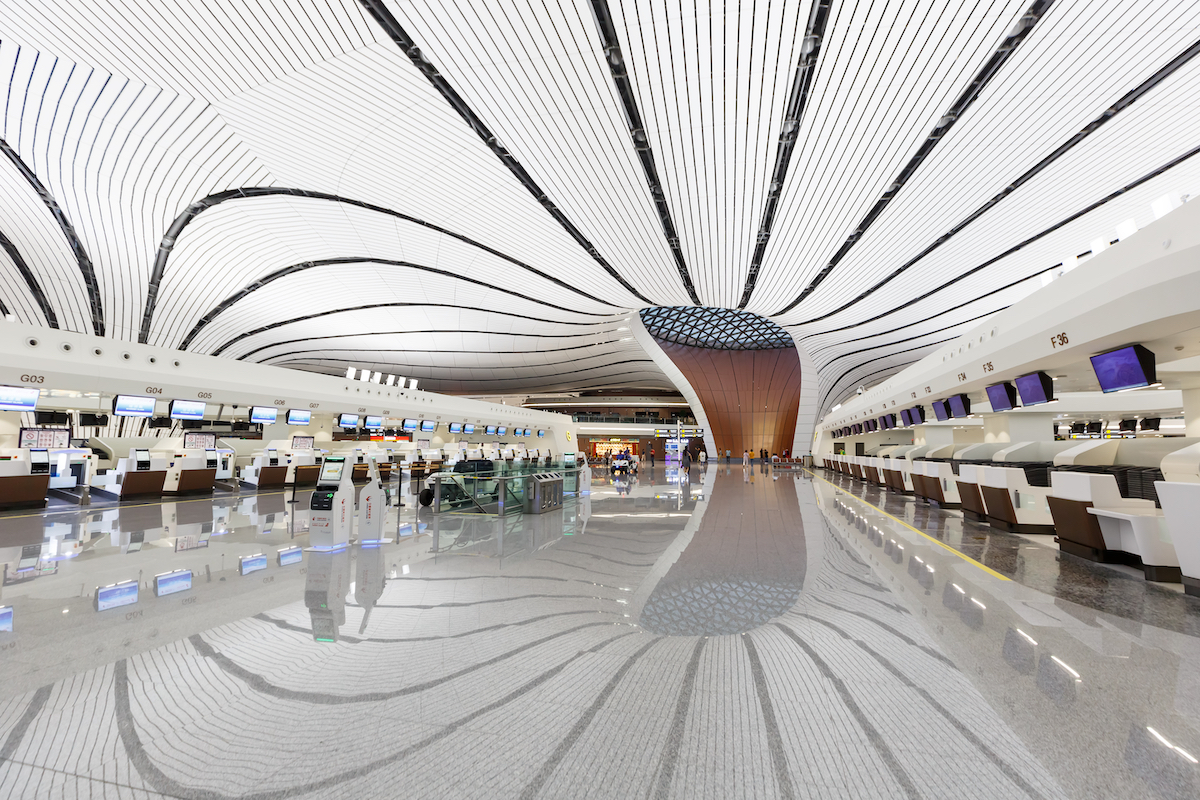
Beijing Daxing International Airport in Beijing and Langfang, Heibei Province, Beijing, China (Photo: Stock Photos from Markus Mainka/Shutterstock)
The radial starfish plan was designed to streamline passenger flows and minimize walking times and distances between gates. The latter feature especially helps passengers trying to reach their connecting flight. Spaces are also left simplified by separating airport program into distinct floors for international travel and domestic travel since security requirements differ for each.
It is clear that the complicated functional requirements and the sheer size of the airport terminal did not prevent Hadid from introducing her signature curves. Make sure to check out the interior photo of Beijing Daxing International Airport to see exactly what we mean.
One Thousand Museum (2019)
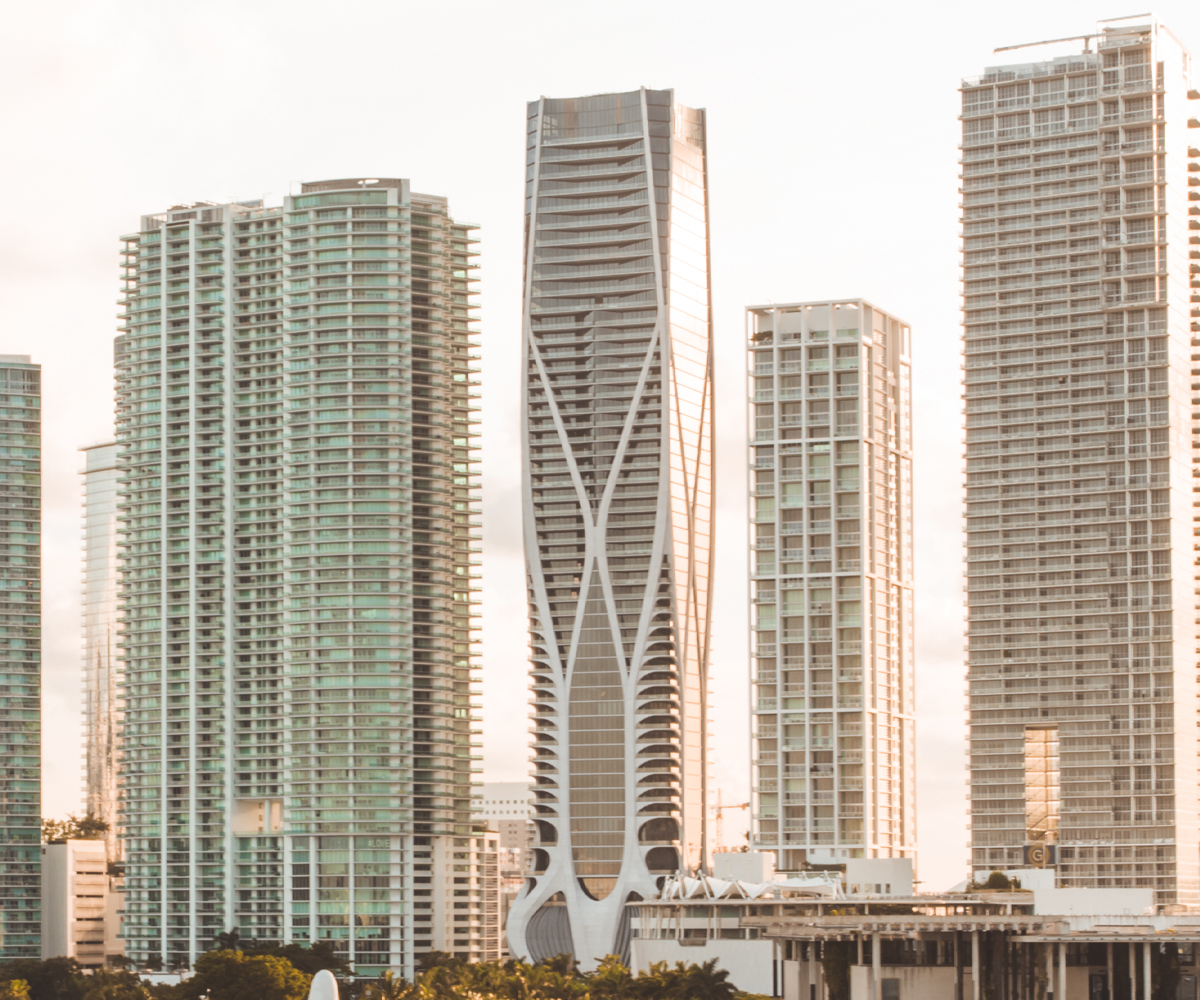
One Thousand Museum in Miami, Florida, U.S. (Photo: Stock Photos from Jfern Visions/Shutterstock)
You might think that Hadid’s out of this world designs would not work well for a skyscraper. However, One Thousand Museum may prove otherwise with its impressive exoskeleton that wraps around a gently curving glass tower. The condominium building is located on Biscayne Boulevard in Miami Florida and is one of the tallest buildings in the city. Its recognizable glass fiber reinforced concrete skeleton will help you pick out Hadid’s building amongst the other glass towers, but that is not its only purpose. The structure allows the interior to contain fewer columns, leaving more room for open floor plans. Hadid passed away during the construction of One Thousand Museum and the project was completed about three years after her passing.











































































